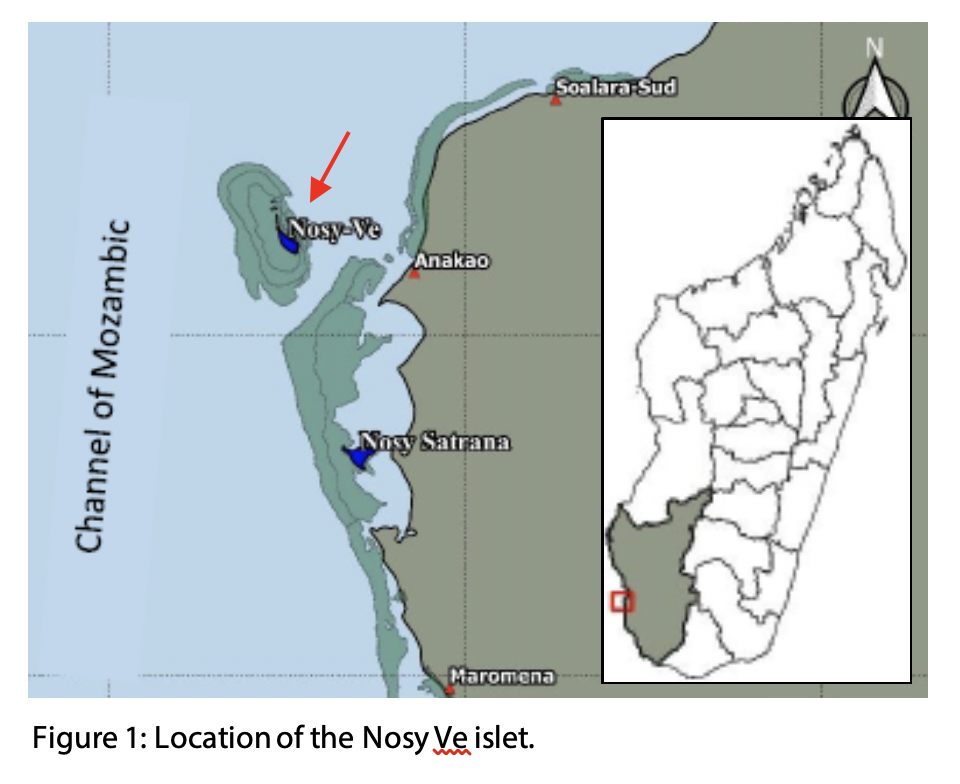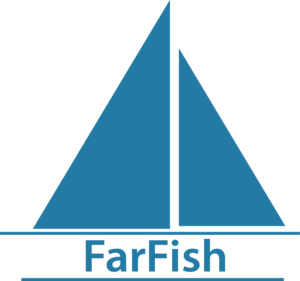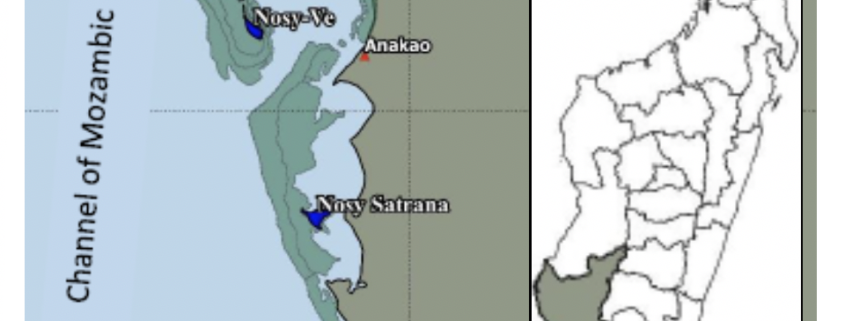Tasks and limits of Marine Protected Area management: The case of the Islet of Nosy Ve, Madagascar
This is one of seven summaries of the essays written by participants of the FarFish course in Marine Management and Innovation offered at the University of Tromso in the spring of 2020. Once a month, we will publish a summary of the work produced by the course participants that highlights insights and reflections on their selected research topics from around the world. This first summary is written by Mahasoa V. J. Tsiebo from YSO-Madagascar.
Nosy Ve is an islet and global biodiversity hotspot located along the southwest coast of Madagascar (Figure 1). Though the islet is uninhabited, more than 200 000 people from three rural communes rely on the services and resources of this marine ecosystem. It provides food, jobs (mainly fishing and tourism) and other livelihood needs. In 1998, a locally managed marine area (LMMA) was established at Nosy Ve and its reef. The association called FIMIMANO (Fikambanana Miaro sy Mampandroso an’I Nosy Ve) has main responsibility for administration of the LMMA. Its main tasks relate to conservation and protection of the islet’s ecosystem as well as ensuring sustainable socioeconomic development through, among other things, promoting ecotourism. FIMIMANO is also responsible for facilitating cooperation between the stakeholders, i.e. the users, the government, the private sector, and NGOs.

However, despite its long existence, FIMIMANO has not been effective in protection of the marine ecosystem of Nosy Ve, which remains under threat of harmful anthropogenic activities. FIMIMANO has tried, but has been ultimately ineffectual in addressing these issues. With poor management and decision-making over the years, little has improved. Therefore, the main objective of this essay was to identify the challenges and limitations that has led to this ineffective management of the Nosy Ve LMMA.
Over the years, population increase, an influx of tourism and use of destructive fishing methods have also contributed to a worsening of the state of the Nosy Ve ecosystem. Decisions taken by FIMIMANO have been oriented towards the conservation of the islet, but have not led to a positive impact on the socioeconomic status of the users. Another contributing factor may be that the users of the islet are generally from areas where socioeconomic welfare and knowledge on sustainability is low. Many lack basic education, and some are illiterate. This is a major challenge with respect to implementation of regulations.
From 2010-2015, due to prolonging unsuccessful management, main responsibility over Nosy Ve was given to an association called FINOMA. However, due to lack of funding and recognition from state bodies and donors, this association was also unable to successfully carry out its role. In the five years of control, FINOMA had focused on social development through the construction of two school buildings. The decision was ultimately taken to merge FINOMA with FIMIMANO and establish an intermunicipal platform with the belief that this would lead to better management of the LMMA.
Overall, the management of the Nosy Ve LMMA has been chaotic and ineffective. Due to poor decision-making, management has not been able turn the fishers away from destructive, traditional methods, nor deal with the consequences of increased population and tourism.
Joséphine Victoire Mahasoa Tsiebo, a participant of the FarFish course Marine Management and innovation originally wrote the essay summarized here.




